How to harvest nopales (and eat them)
A guide to one of my favourite things, eating Nopales!
This technique has served me well to pick and eat Nopales from the highlands of Mexico all the way up to the Utah deserts in Capitol Reef and around, where Nopales are not generally eaten but are part of the landscape.
The technique itself is fairly simple, but as my italian friends would say, simple is not easy. Avoiding the big thorns on the cactus requires careful focus and attention, but avoiding the small hair like ajuates requires skill and patience. You’ll see what I mean when you try it.
- Picking the Nopal: This is the first challenge, although most bibliography I’ve read clearly states that all species of Nopal are edible, that doesn’t mean that you can eat every Nopal you find. They have to be green, soft and new-ish, which happens year round, but peaks in a certain time of year depending on where you are. In Michoacán it peaks in the spring before the first heavy rains. You have pay careful attention to the colour of the cactus, it needs to be light green, lighter than the rest of the plant. It can also be small-ish, often thorns that are not fully developed are a sign you’re on the right path. Really small nopales can be eaten raw, but are a pain to clean for what you get.
- Preparing to hold the Nopal: Once you find a good Nopal that is within reach, get a sharp knife (Mora’s work really well for me) and clean the base of the Nopal, where it connects to the plant. The idea is to clear the thorns and ajuates from a section close to the base so that you can pinch it with your thumb and hold it while you clear the rest of the Nopal.
- Cut off the Nopal and clean it: Grip it firmly (you’ll find out quickly if you did the last step correctly!) and cut it off with your other hand. It’s tricky, bcause raw nopales are viscous. If the cactus is in a weird position, you can remove it from the plan and let it drop on the floor. Once you have separated the cactus from the plant, be sure to clean the cut in the base on the cactus. Try to make as clean a cut as possible and remove the rest of the Nopal you just took to avoid rot setting in. You can then proceed to pinch it with one hand, and clean it with the knife using a shaving motion, removing each group of thorn and ajuates with a swooping cut. Cut the sides and top off at the end, the idea is to start close to the base so that your grip is improved with each motion. You’ll find Nopales are tough, and the sharpness from your knife will be dulled quickly if you accidentally hit the tough thorns instead of the tender bases. This step sounds easy, but removing these thorns efficiently without getting hurt takes time and practice.
- Now wash it: Once you have harvested enough Nopales, you’ll get to your base camp or home and proceed to wash them under the water stream, carefully verifying that no ajuates are sticking to the flesh of the Nopal. This is important, as you don’t want these ajuates in your mouth. It hurts. If you’re camping and the water supply is low, clean them with a cloth and pass them over a strong fire.
- It’s cooking time! Once your Nopales are clean, you’re ready to cook them or store them. Nopales keep really well, in the fridge they’ll last for more than two weeks. After a while you’ll get dark spots but these are harmless, it’s really hard for them to go bad. To cook them, follow any recipe you want, there are a million ways to do it. My mother cooks them in the pressure cooker and stores them cooked in a tupperware with water, then you can quickly add it to any dish or salad and it’s very time-efficient. That said, if you ask me the best recipe is this one:
- Nopales “The Easy Way”: Slice 4 large Nopales lengthwise into long thin strands, the thinner and longer the better. Slice half a medium sized onion into strands, I find the best way to do this is to cut slices transversely and then split them in half. Get a couple of chiles, two árbol chiles or about 4 chiltepines and minc them. Then fry up the chiles and the onion with some olive oil in a heavy cast iron pan or similar (according to local tradition copper pans help “cut” the viscocity out of the Nopales but it happens as well with any other pan). Once the onion is soft and brown turn up the flame and add the Nopales. Try to get some maillard reaction on there and once they are brown enough for you turn the heat down to a simmer and add some water. Now is a good time to add salt. Once the water evaporates, check if the Nopales are to your liking (soft and not viscous) and if not, add some more water and repeat until done. Usually takes about 3 cycles for me. Serve in tacos with freshly made tortillas and some limes. Scale accordingly and season to your particular taste.
- In general, it’s said that if you cut them early in the morning or late in the afternoon they are a bit more acidic (which is desirable) and if you cut them when the sun is slamming down they will be more viscous, which you might like. I don’t have enough experience to tell you this is definitely true or un-true, but it seems right from my experience.
One of the best feelings is to come back from a walk with some delicious food that you can share with your loved ones. This hits the spot for me, and can help a lot when times are tough or when foraging on a multi-day hike. Let me know how it goes!
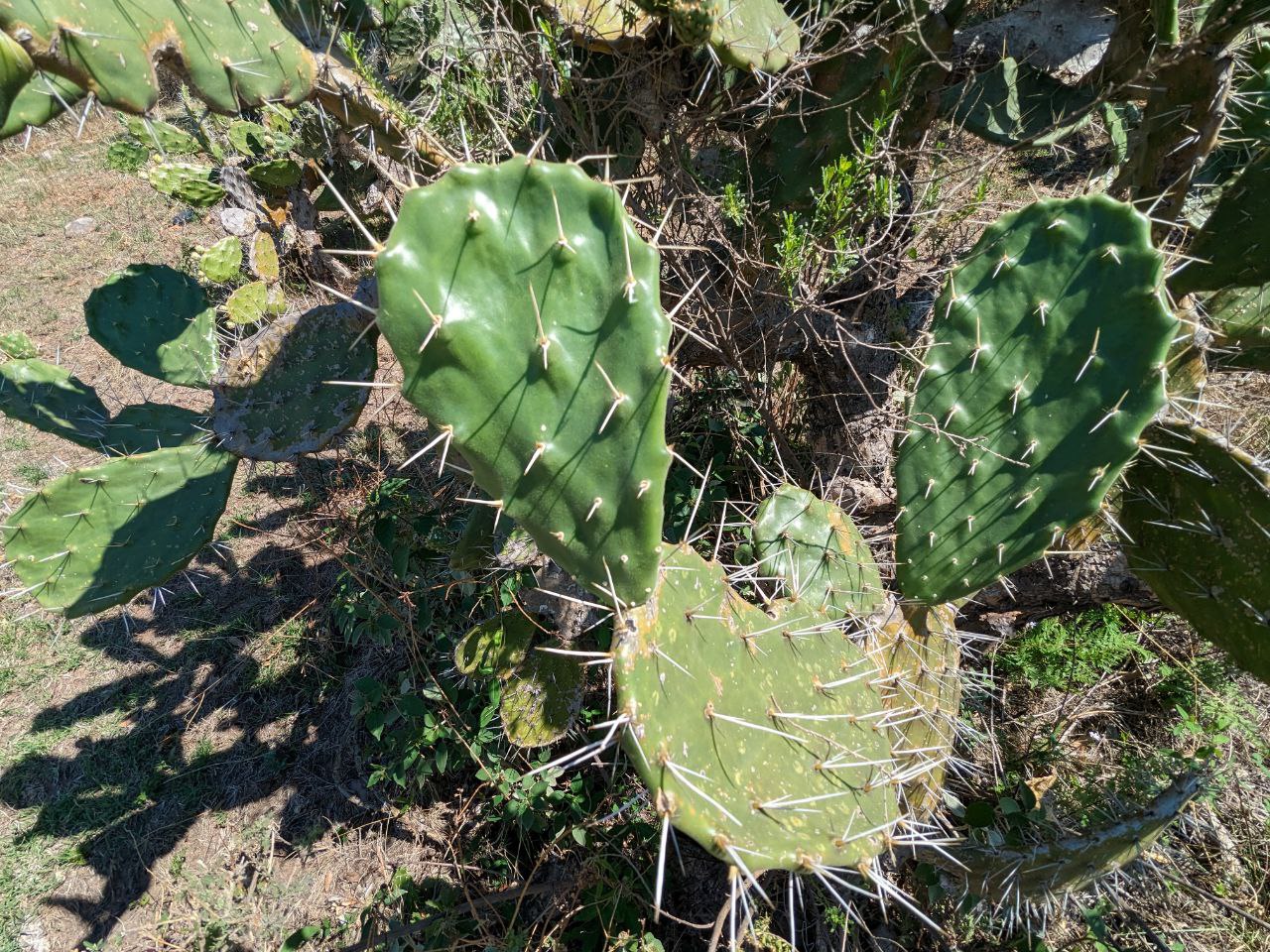 Choose the Nopal
Choose the Nopal
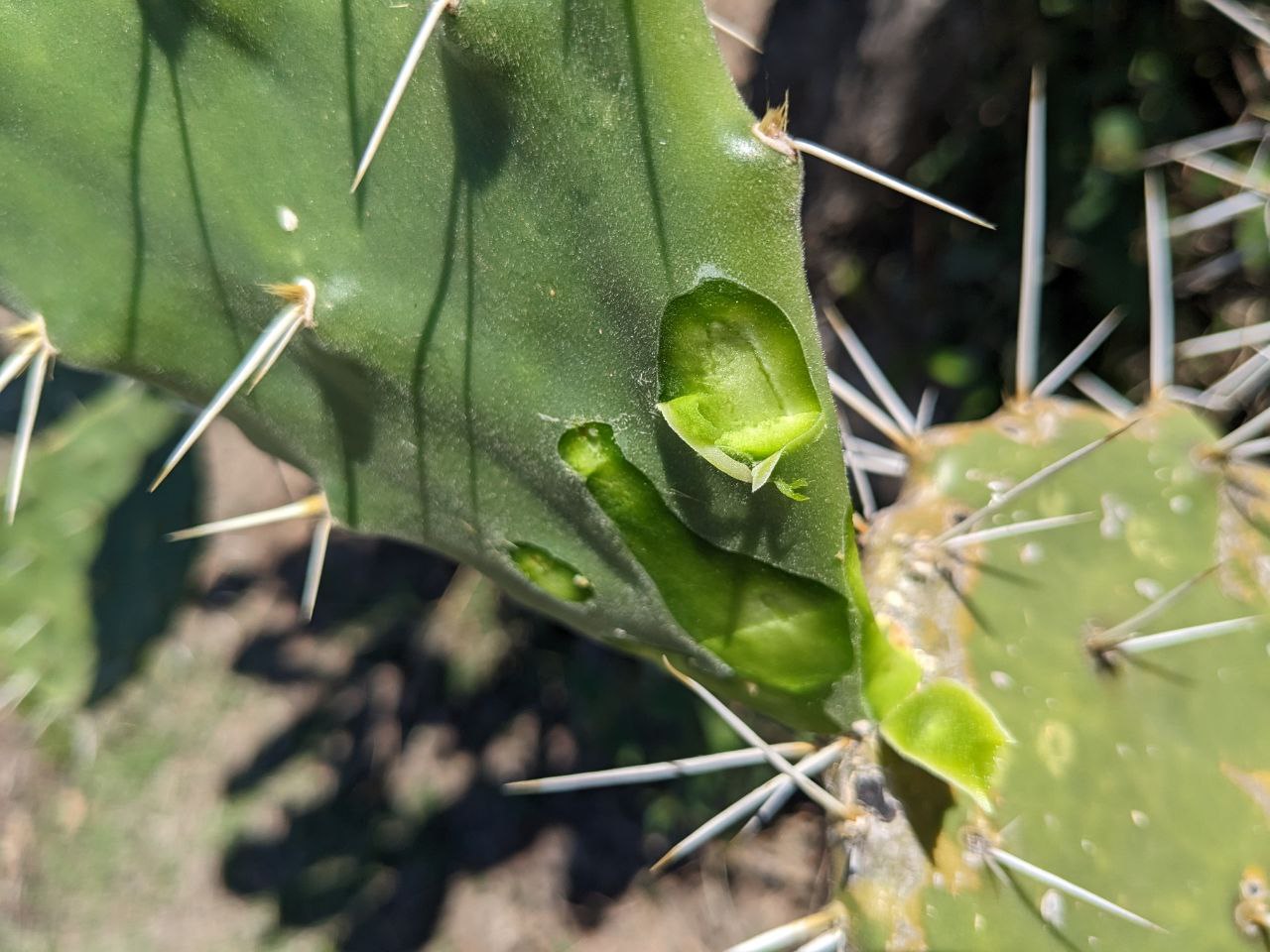 Clean the lower part before you chop it off.
Clean the lower part before you chop it off.
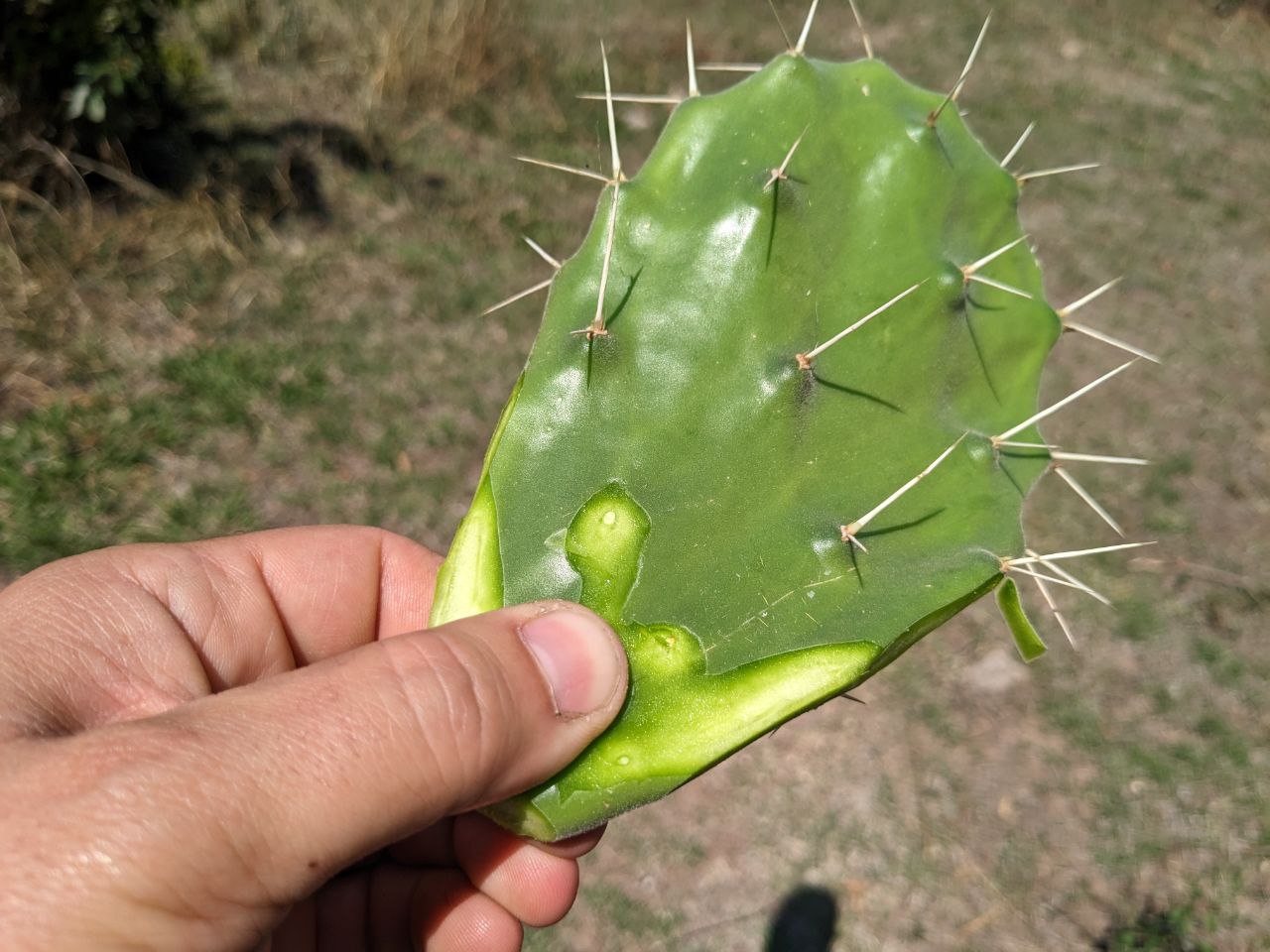 Once the bottom part is clean, hold it like this to perform the shaving motion to clean the thorns.
Once the bottom part is clean, hold it like this to perform the shaving motion to clean the thorns.
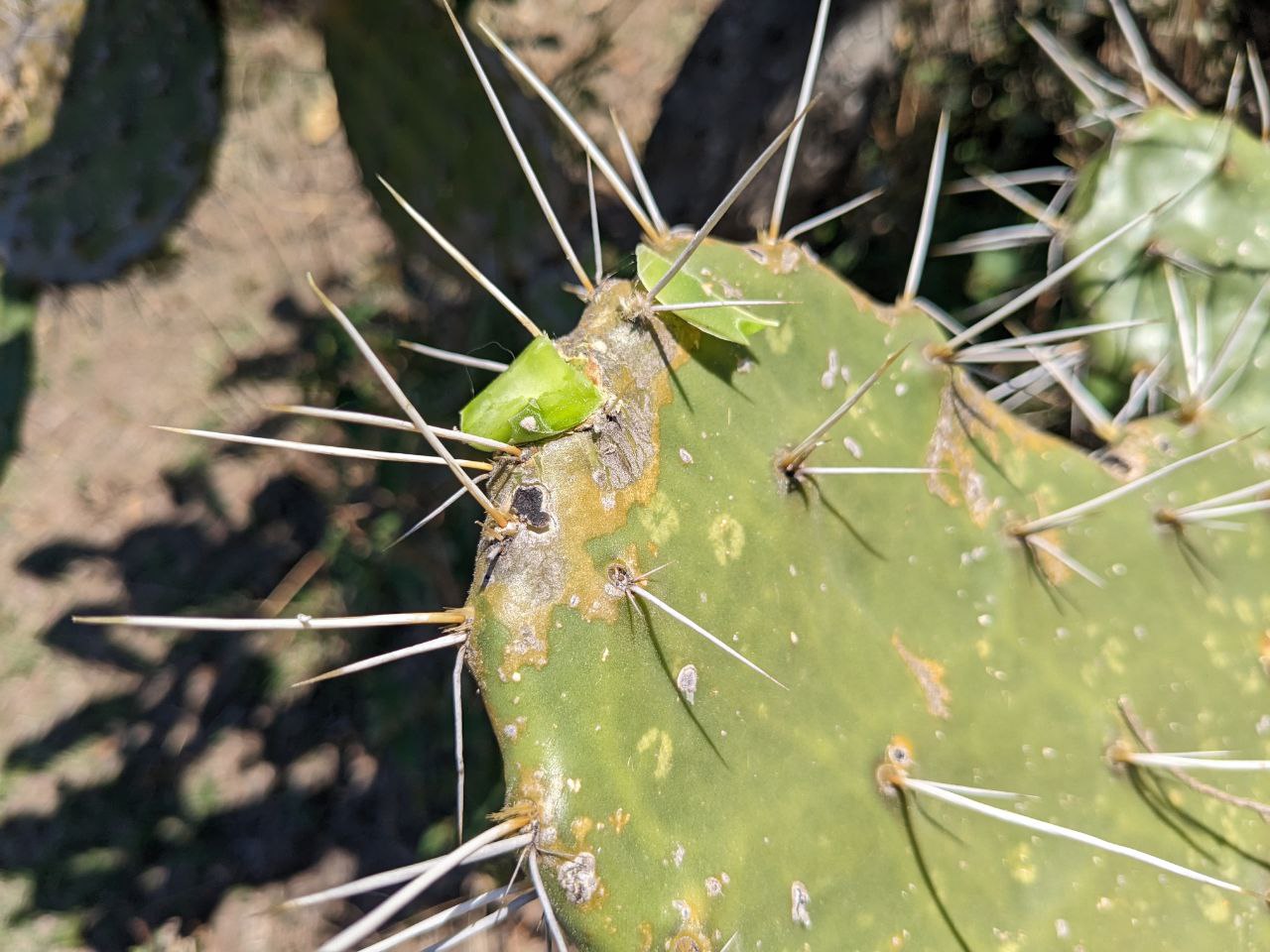 Be sure to clean the stumps and cut flush to avoid rot.
Be sure to clean the stumps and cut flush to avoid rot.
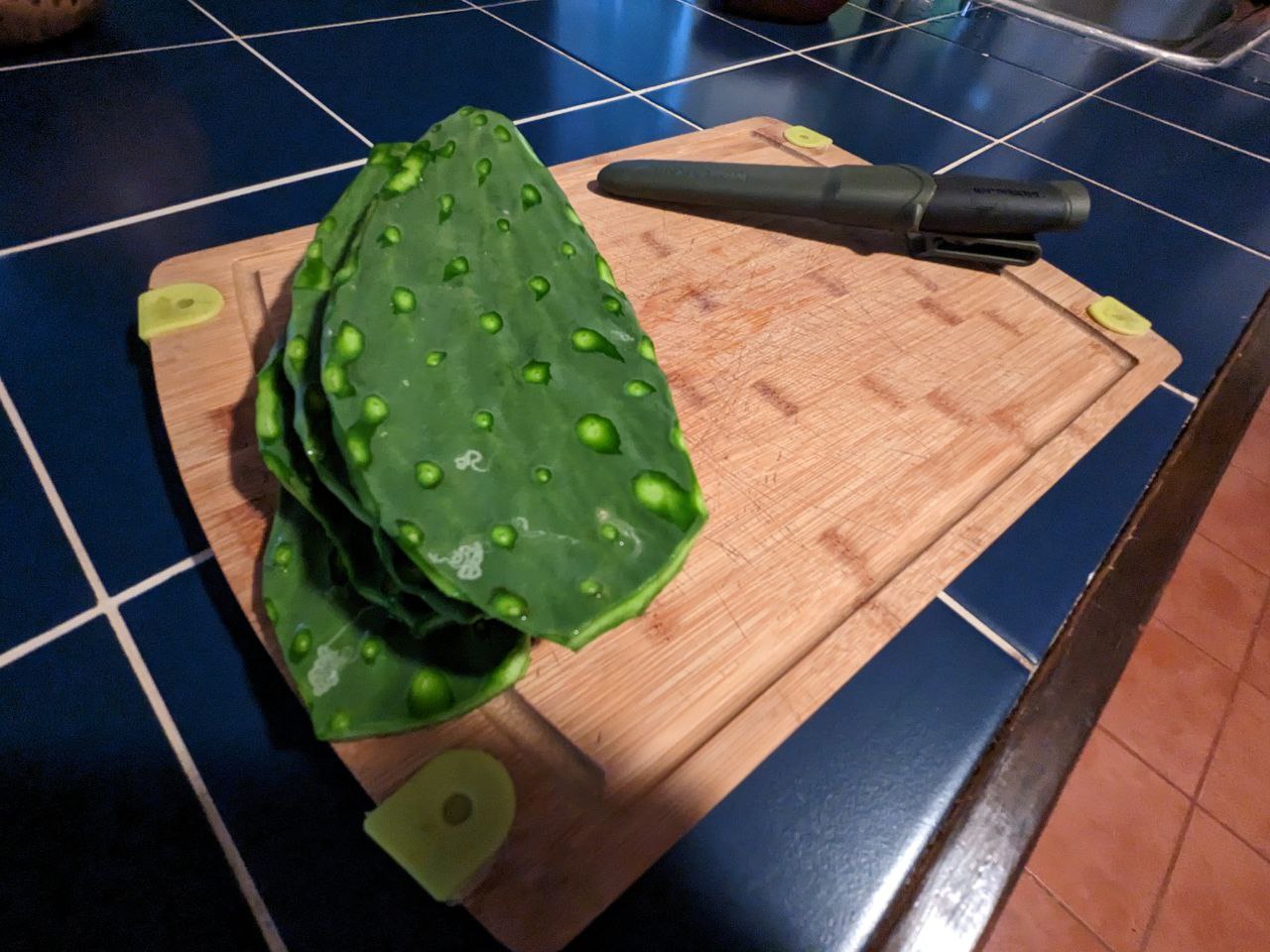 Enough clean nopales for two, ready to cook!
Enough clean nopales for two, ready to cook!
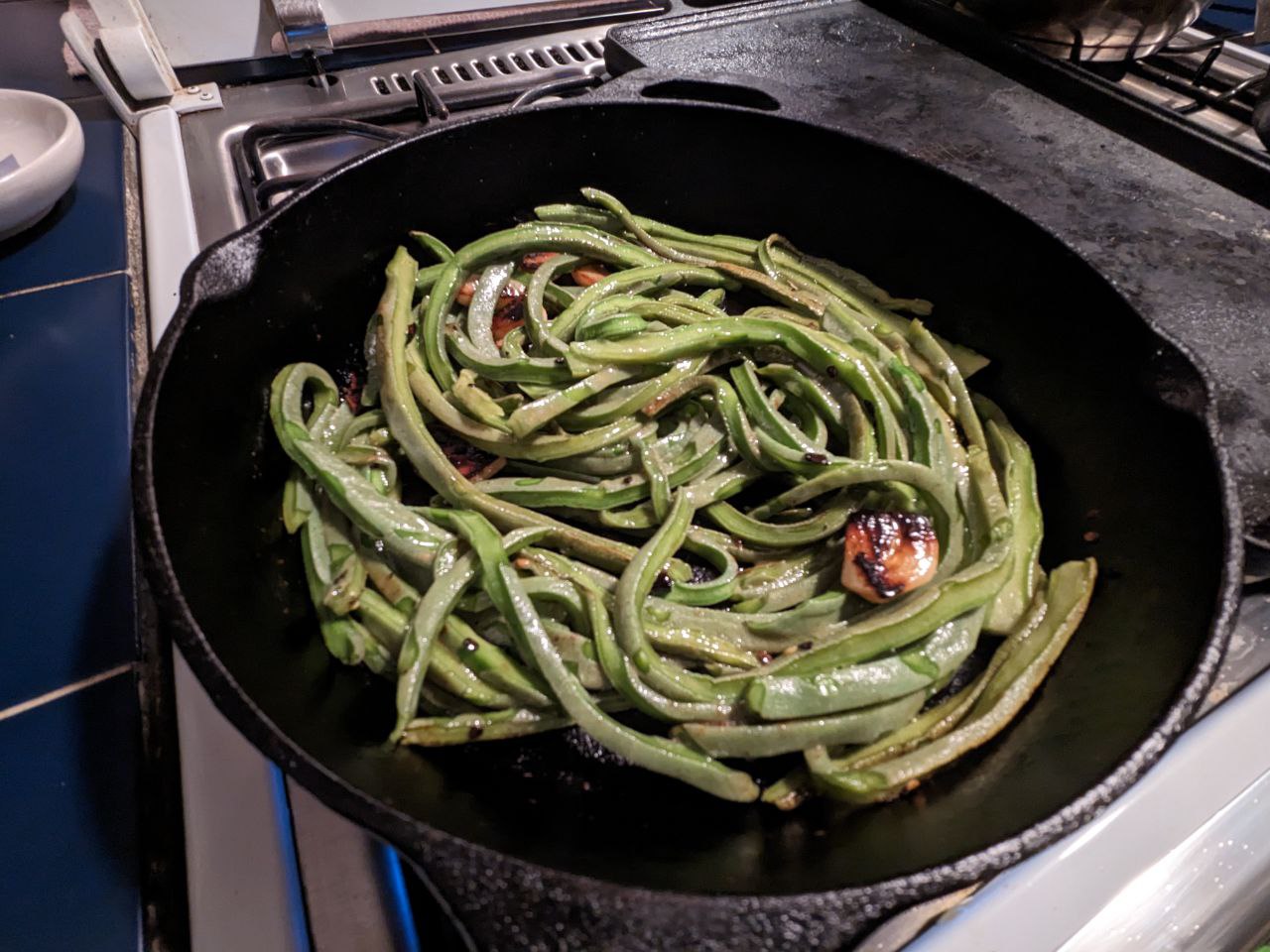 Cooking the easy way.
Cooking the easy way.